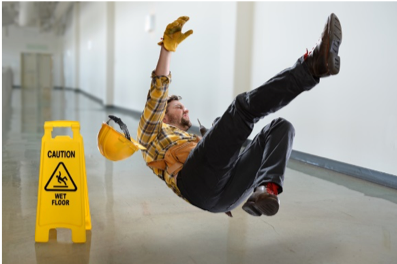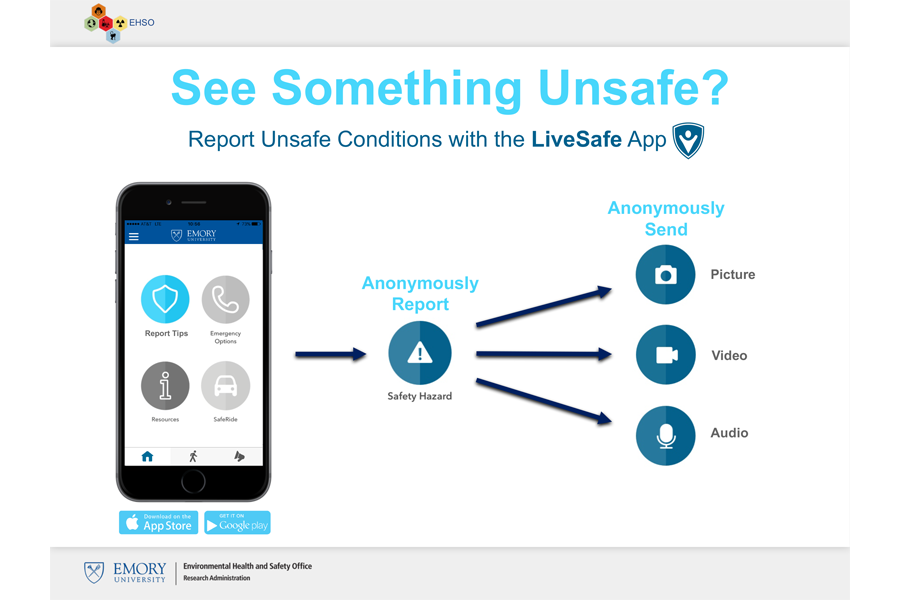 Slips, trips and falls are frequent causes of accidents both on and off the job. According to OSHA, slips, trips and falls constitute the majority of general industry accidents and result in back injuries, strains and sprains, contusions and fractures. Additionally, they cause 15 percent of all accidental deaths and are second only to motor vehicles as a cause of fatalities.
Slips, trips and falls are frequent causes of accidents both on and off the job. According to OSHA, slips, trips and falls constitute the majority of general industry accidents and result in back injuries, strains and sprains, contusions and fractures. Additionally, they cause 15 percent of all accidental deaths and are second only to motor vehicles as a cause of fatalities.
What Causes Slips, Trips and Falls?
A slip occurs when there is too little traction or friction between the shoe and walking surface. A trip occurs when a person’s foot contacts an object or drops to a lower level unexpectedly, causing them to be thrown off-balance. A fall occurs when a person is too far off balance. People slip on water or oil spills; they trip over small objects and electrical cords; and they fall off ladders or down stairways.
There are many situations that can cause slips, trips and falls. Slips, trips and falls can be prevented, but only if everyone does his/her part. First, always be alert to potential hazards in unfamiliar surroundings. Spot-check walkways and work areas to be sure that no trip or slip hazards exist. Even more importantly, when you find a fall hazard, make sure that something is done to correct it. Download the LiveSafe app to report unsafe situations that may cause slips, trips or falls. The majority of slips, trips and falls at work are caused by obvious hazards, most of which could have been easily corrected. Water and oil spills, small objects on the floor, electrical cords and objects hanging out into walkways will eventually trip someone, so take a moment to eliminate these obvious hazards.
Tips for Avoiding Slips, Trips and Falls
- Always practice good housekeeping. Don’t leave loose objects on walking working surfaces.
- Remove as much water, snow, and debris from your shoes as you can. Water from rain and melting ice on the floor can lead to slippery conditions.
- Never leave spills unattended. If they can’t be cleaned up immediately, set up a barrier so that people know about the hazard.
- Never allow an object to sit on stairways or ramps. Cartons, boxes, and other obstacles are especially dangerous here.
- Always use a ladder or stepstool. Never stand on a chair, desk, shelf, crate or box or any other unstable items to reach something. If you must routinely reach items in high locations, purchase a ladder or stepstool to allow it to be done safely.
- Report loose or damaged handrails, stairway treads, mats, and walkway runners. Sometimes even a small worn spot can cause someone to trip.
- Wear proper footwear. Wear footwear that is appropriate for the conditions inside and outside. On smooth or wet surfaces, always wear shoes with slip resistant soles.
- Ensure proper lighting. Report burned out lights, as well as walkways and work areas that are too dark.
- When walking, don’t carry loads that block your vision. If you can’t see where you are going, a trip and fall is inevitable.
- Use hand or safety rails on stairways. It’s the best way to keep your balance.
- Report any floor openings that are not protected. These openings can cause very serious falls.
- Keep away from the edge of unprotected floors/platforms that are elevated. If you lose your balance while working close to the edge, gravity is always going to win!

Leave a Reply